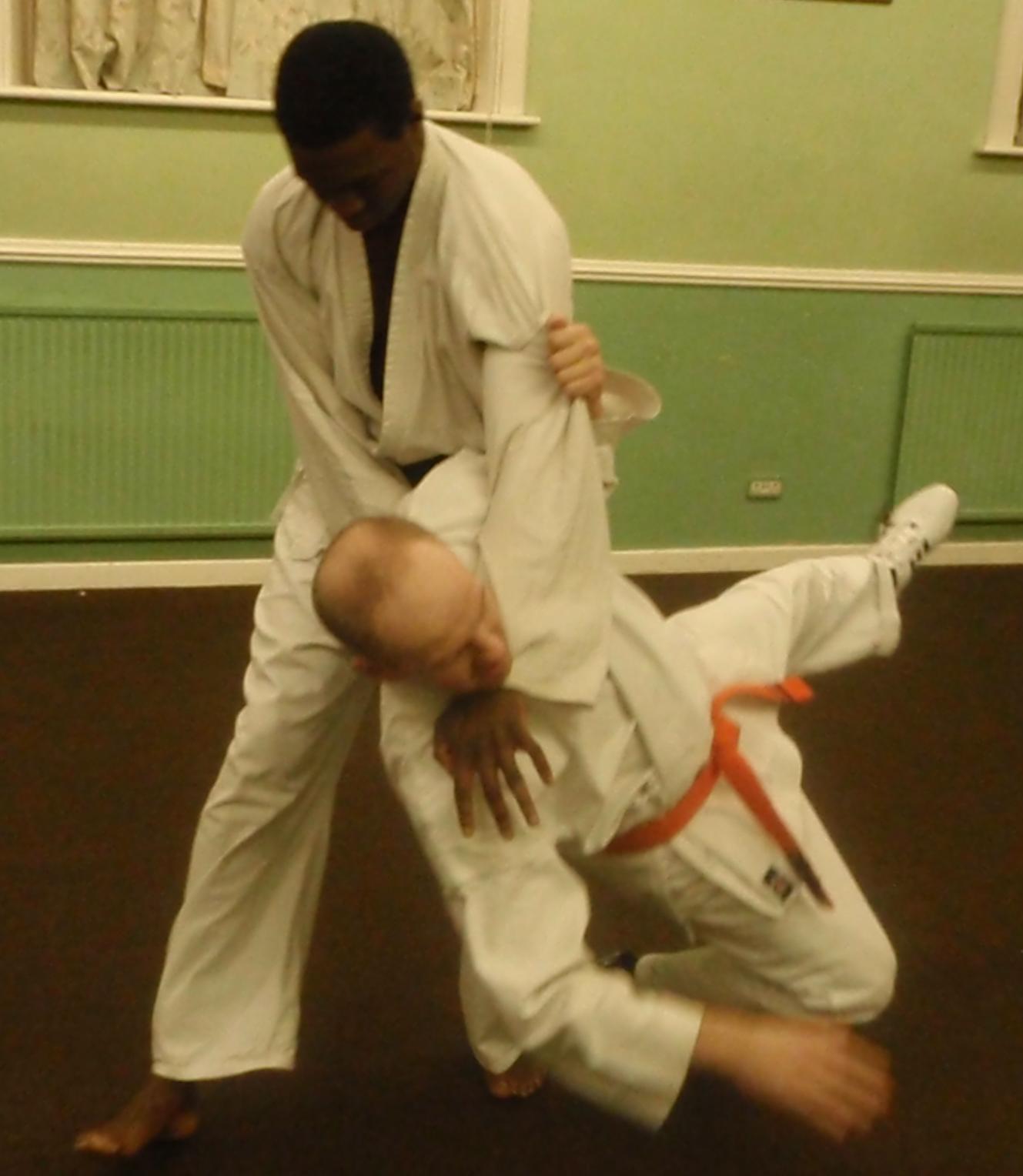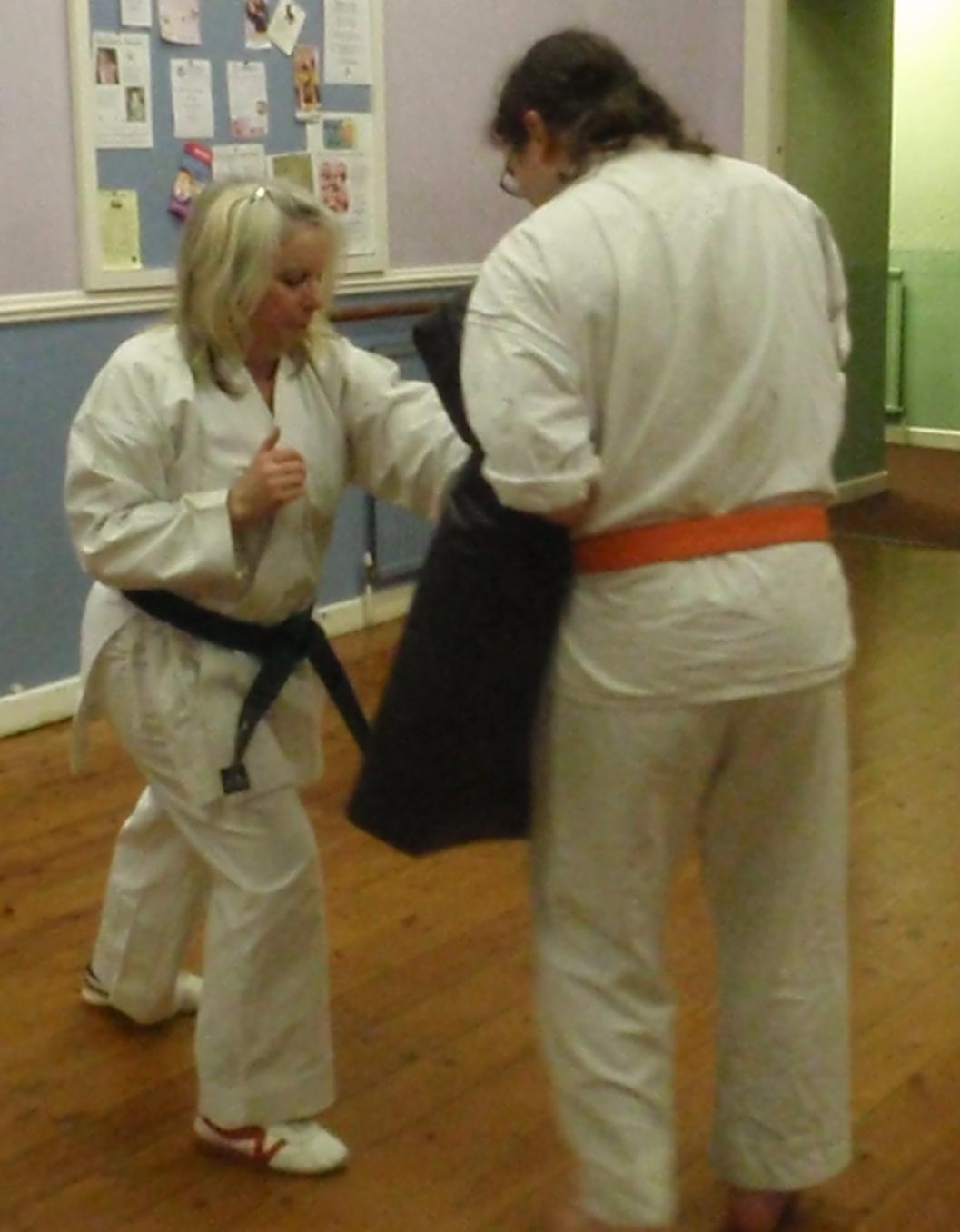
![]()
![]()

Headingley Karate
|
|
|
How We Train
Group Practice
Training takes place in small groups (usually between 4 and 10 students in one session) and is restricted to adults of 18 years and over at the Leeds Dojo. The principles of Shinseido are transmitted in 3 main ways:- Through the practice of kata, or solo form (a sequence of techniques strung together). Some forms are modern, some are steeped in tradition and have a long history.
- Through the practice of exercises with a training partner. These help students to work on many different skills in a safe environment. Some exercises are fixed, in which the movements of both students are completely determined. Others allow for a free and spontaneous exchange of techniques. The meaning of the kata are explored, with a partner, through the practice of their applications.
- Auxiliary exercises, such as striking a bag/pad.

A typical throw/takedown
|
Techniques
Shinseido contains a wide range of techniques, giving practitioners the opportunity to respond to assault with different degrees of severity. The severity used will depend entirely on the circumstances of a particular situation. It is not always necessary to strike an assailant, but that option cannot be discounted. Unlike most styles of Karate, Shinseido does not emphasise deep stances or high kicks. Any techniques we use are chosen because they work rather than because they look good.All techniques can be split into the following categories:
- Bridging: Receiving an attack without harm, including blocking, redirecting and releasing grabs.
- Striking: Using various parts of the body to strike. Blows are aimed at the vulnerable parts of the assailants body for maximum effect.
- Joint-locking: Manipulating the assailants limbs in order to cause pain, control the assailant or, if necessary, damage the joints.
- Throws & takedowns: Knocking or throwing the assailant to the ground in order to control them or to allow you to escape.
- Chokes: Restricting the assailants ability to breathe in order to control them or cause unconsciousness.
To ensure safety in training and so that students build a strong skills base they are introduced gradually to the different categories of techniques.
All training is carried out under the direct supervision of an experienced teacher.
Rather than using a random selection of techniques in Shinseido, we strive to only use those techniques which comply with certain principles.
These are what we regard as the core Principles of Combat.
Click here for further information on these principles.

Regular padwork is essential to develop effective strikes
|
Typical Session
A typical lesson will consist of some of the following training practices:- Warm up - preparing the body for the exercise to follow
- Basics - repeated practice of the fundamental movements of Shinseido
- Bag/pad work - practicing the basic movements as strikes against a pad
- Kata - individual or group study of the formal solo exercises
- Bunkai - applying the principles in the kata to specific attacks
- Fixed partner drills - learning to apply the principles of Shinseido with a partner and ingraining specific responses
- Spontaneous partner drills - learning to apply the principles and techniques in a more rehearsed situation
- Role-playing - learning to interact with potential assailants in order to prevent an assault from happening in the first place
- Discussion of various aspects of self-defence and martial art training